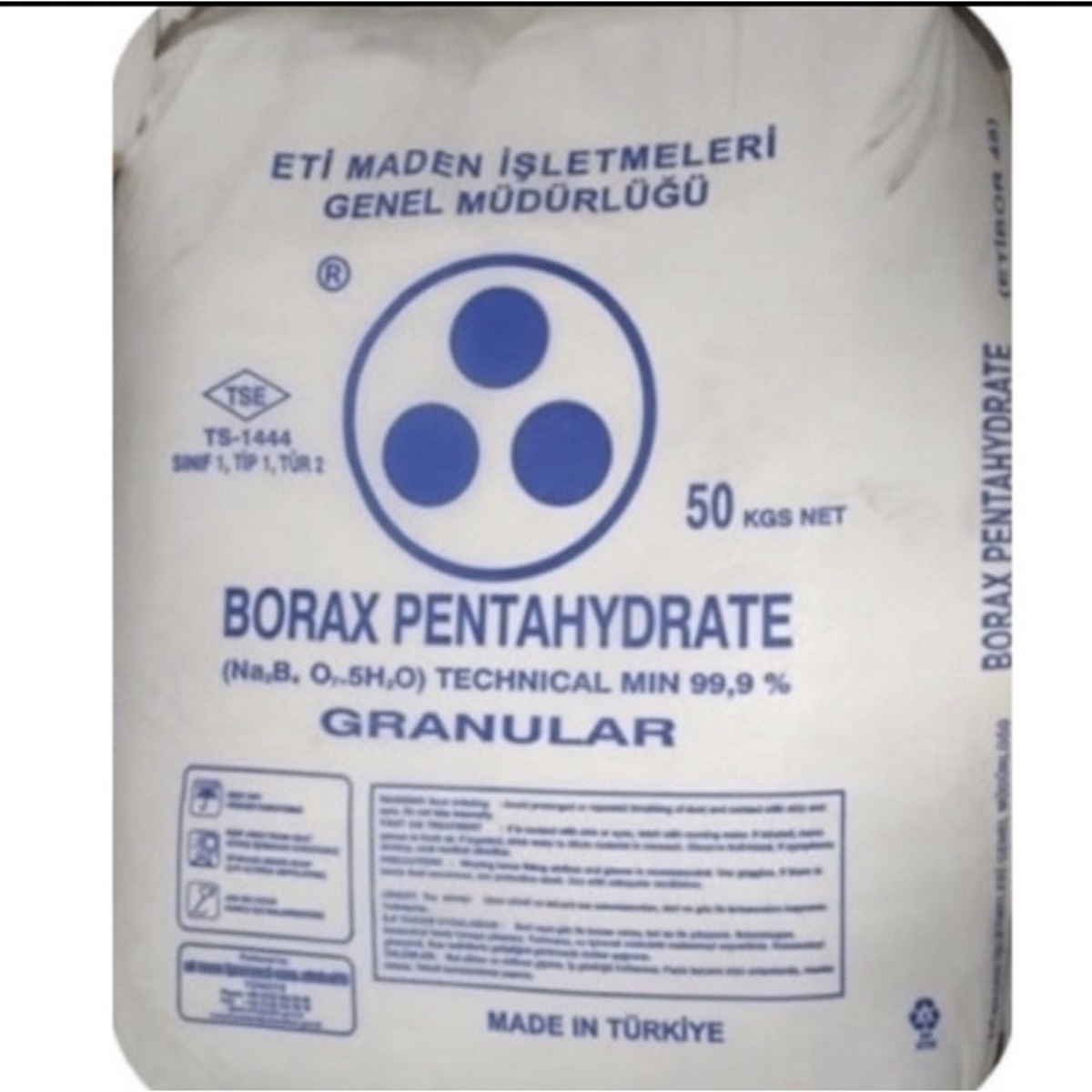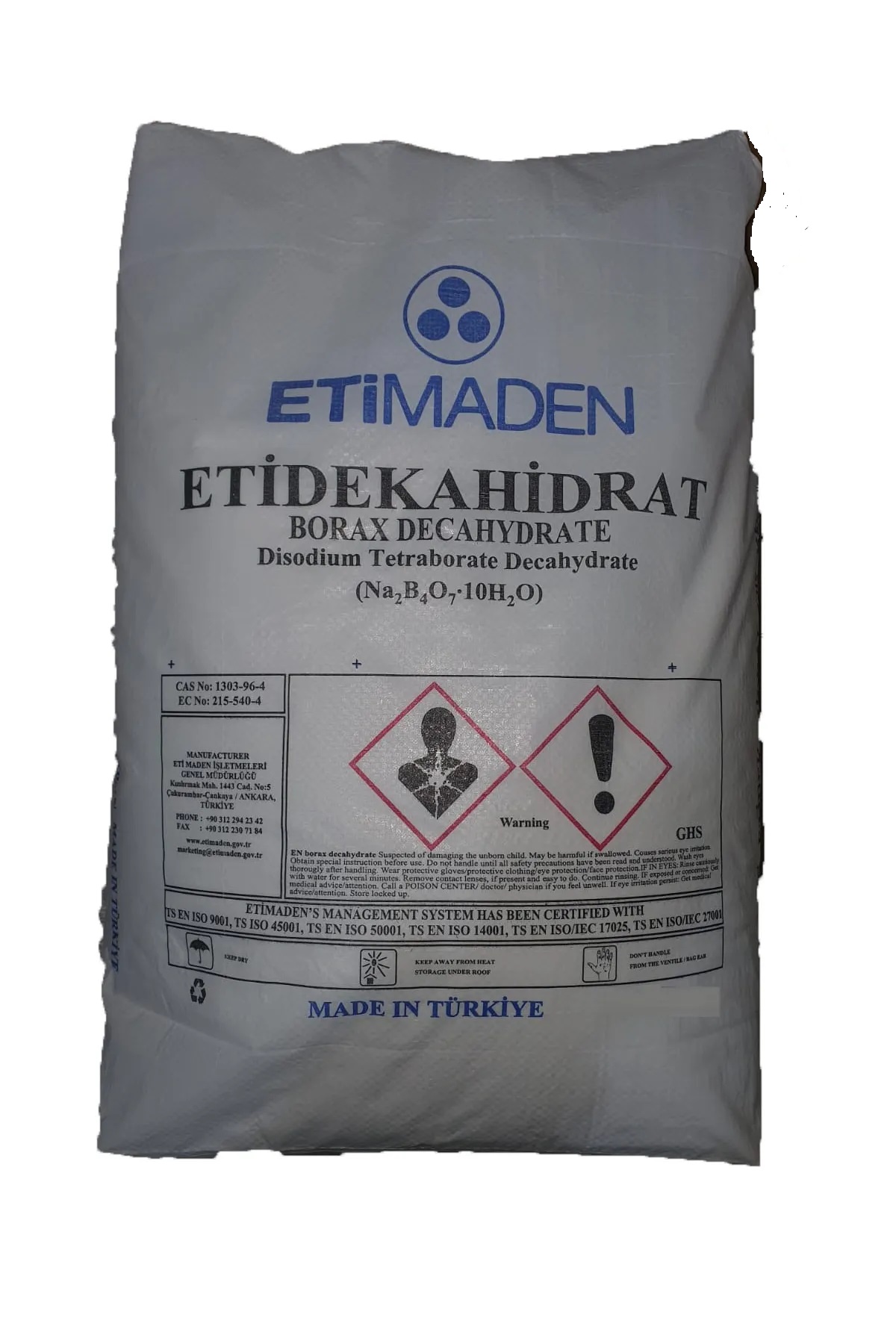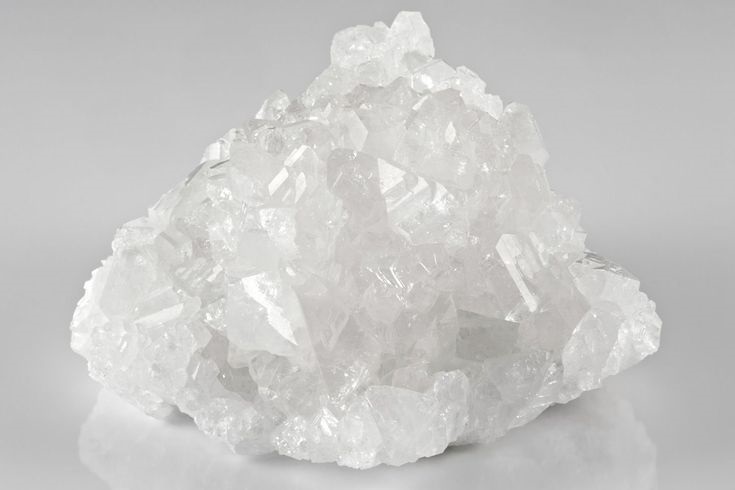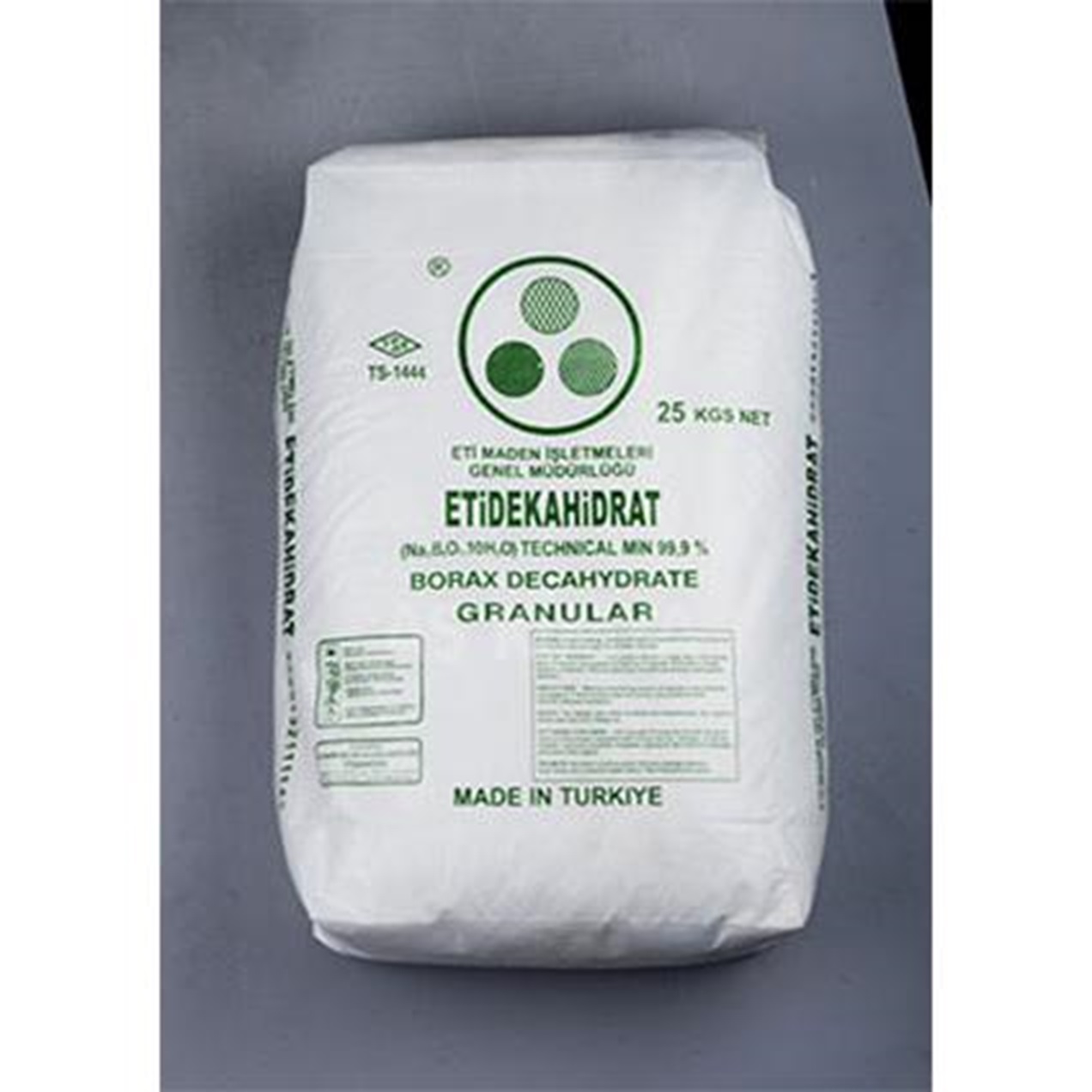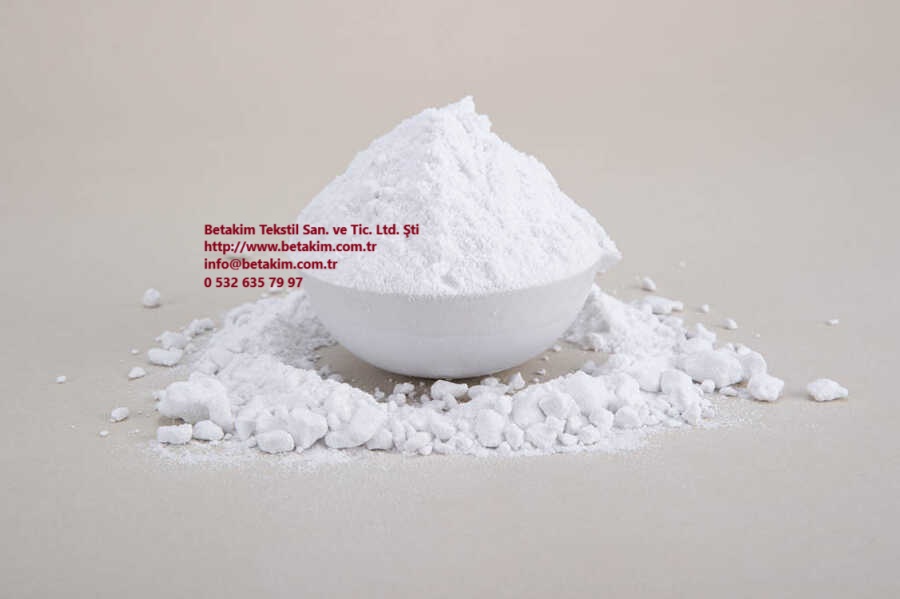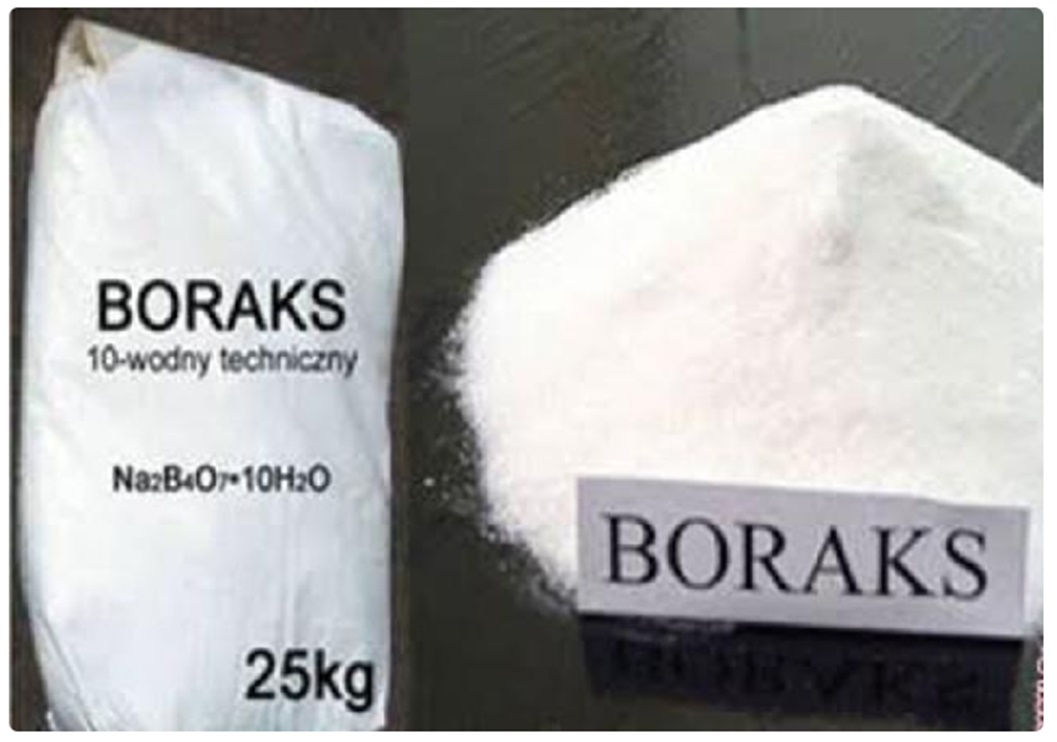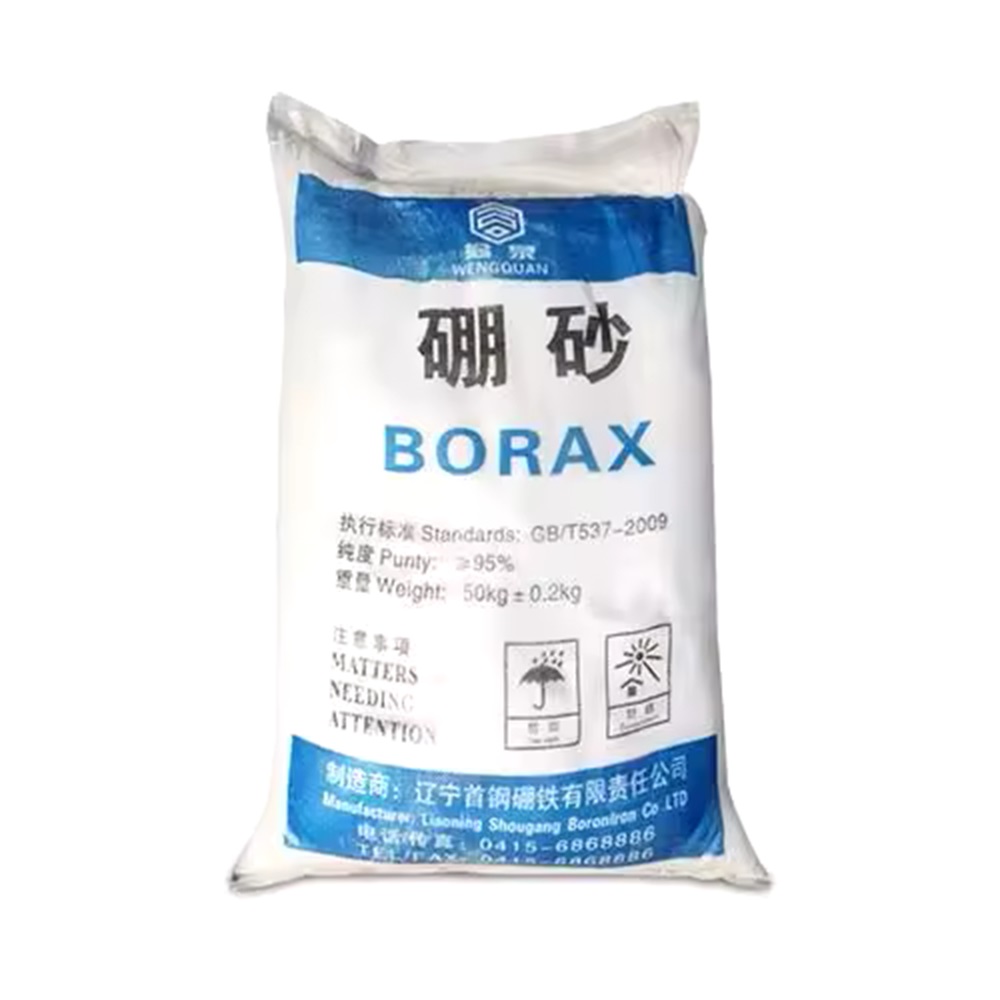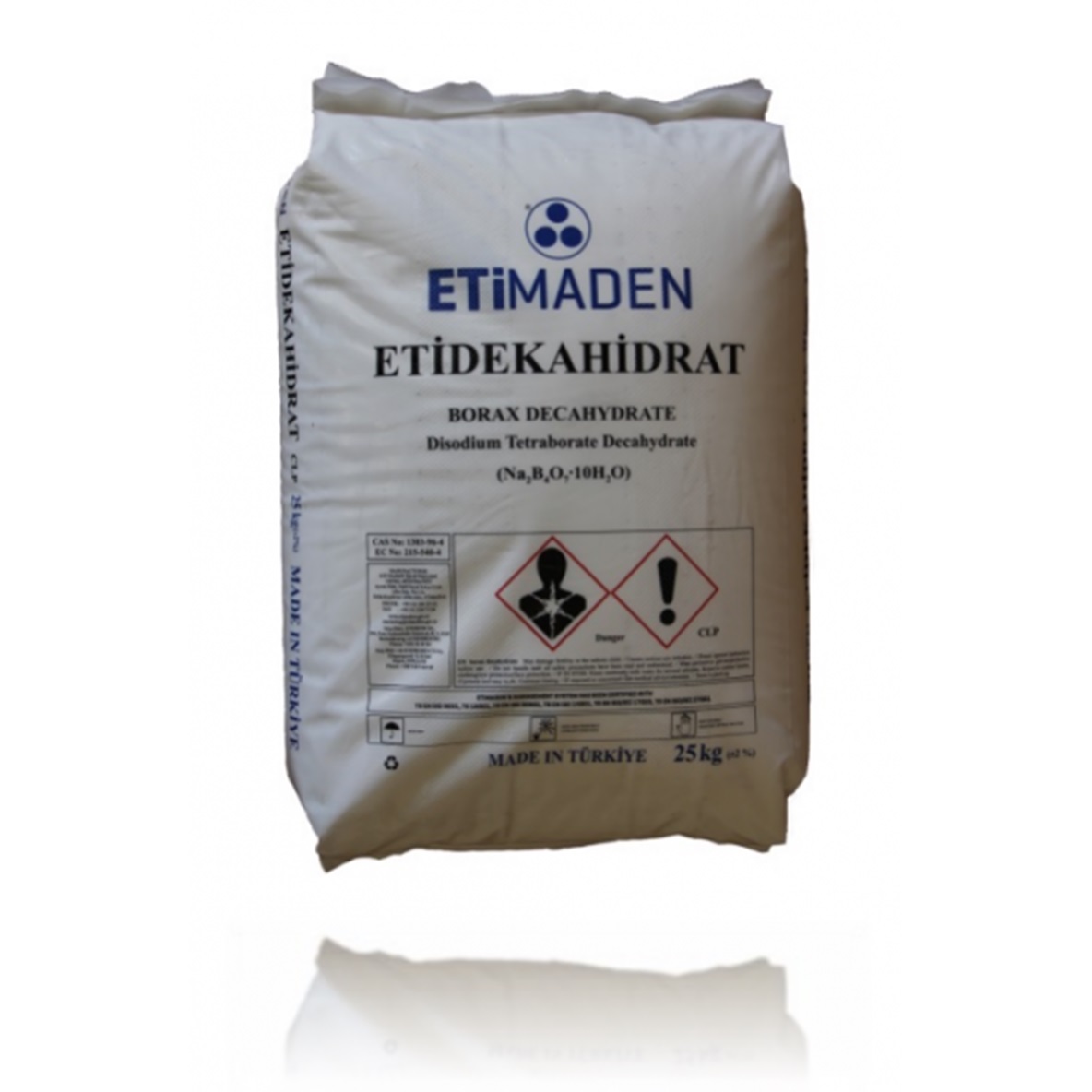We unleash your business potential by maximize the business innovation.
Send EmailBorax, Sodium Tetraborate Decahydrate, 1303-96-4 , Sodium Tetraborate Pentahydrate, 12179-04-3
CAS: 1303-96-4
Molecular Formula: B4H20Na2O17
ames and Identifiers
| Name | Sodium Tetraborate Decahydrate |
| Synonyms | Borax borascu antipyonin antipyonin[qr] Borax,medicinal Disodium tetraborate Boric acid sodium decahydrate Sodium tetraborate,decahydrate Sodium Tetraborate Decahydrate SODIUM TETRABORATE DECAHYDRATE BIOXT Borax,Sodium tetraborate,decahydrate,sodium borate, decahydrate,antipyonin,borascu 2,4,6-trioxa-1,3,5,7-tetraboraheptane-3,5-diolate, 1,7-dioxo-, sodium salt, pentahydrate disodium 1,3,5,7-tetrahydroxy-2,4,6,8,9-pentaoxa-3,7-dibora-1,5-diboranuidabicyclo[3.3.1]nonane octahydrate |
| CAS | 1303-96-4 |
| EINECS | 603-411-9 |
| InChI | InChI=1/B4H4O9.2Na.8H2O/c5-1-9-3(7)11-2(6)12-4(8,10-1)13-3;;;;;;;;;;/h5-8H;;;8*1H2/q-2;2*+1;;;;;;; |
| InChIKey | CDMADVZSLOHIFP-UHFFFAOYSA-N |
Physico-chemical Properties
| Molecular Formula | B4H20Na2O17 |
| Molar Mass | 381.37 |
| Density | 1.73g/mLat 25°C(lit.) |
| Melting Point | 75 °C |
| Boling Point | 320°C |
| Water Solubility | 60 g/L (20 ºC) |
| Solubility | H2O: 0.1M at20°C, clear, colorless |
| Vapor Presure | 0.213 hPa (20 °C) |
| Appearance | Crystalline powder |
| Specific Gravity | 1.73 |
| Color | White, gray, bluish or greenish white streaked |
| Odor | Odorless |
| Exposure Limit | ACGIH: TWA 2 mg/m3; STEL 6 mg/m3NIOSH: TWA 5 mg/m3 |
| Maximum wavelength(λmax) | ['λ: 260 nm Amax: 0.012', , 'λ: 280 nm Amax: 0.010'] |
| Merck | 14,8590 |
| PH | 9.21(1 mM solution);9.17(10 mM solution);9.05(100 mM solution); |
| Storage Condition | 2-8°C |
| Sensitive | Easily absorbing moisture |
| MDL | MFCD00149193 |
| Physical and Chemical Properties | Properties of colorless translucent crystals or white crystalline powder. Odorless and salty. relative density 1.73 solubility slightly soluble in cold water, more soluble in hot water, glycerol; Slightly soluble in ethanol, carbon tetrachloride. |
| Use | Used as the basic raw material of boron compounds, also used in glass, enamel, non-ferrous metal welding, fertilizer, atomic energy industry and electron tube |
Risk and Safety
| Risk Codes | R62 - Possible risk of impaired fertility R61 - May cause harm to the unborn child R60 - May impair fertility |
| Safety Description | S22 - Do not breathe dust. S24/25 - Avoid contact with skin and eyes. S36/37 - Wear suitable protective clothing and gloves. S45 - In case of accident or if you feel unwell, seek medical advice immediately (show the label whenever possible.) S53 - Avoid exposure - obtain special instructions before use. |
| UN IDs | UN 1458 |
| WGK Germany | 1 |
| RTECS | VZ2275000 |
| TSCA | Yes |
| HS Code | 28401990 |
| Toxicity | LD50 orally in rats: 5.66 g/kg (Smyth) |
Upstream Downstream Industry
| Raw Materials | Sodium carbonate Sodium hydroxide Calcium carbonate |
Reference Information
| pH indicator color change ph range | 9.2 |
| Physical properties | Borax is the sodium salt of boric acid. The general term for sodium tetraborate is a boron-containing mineral. According to the amount of crystal water, it is divided into three types: borax decahydrate, borax pentahydrate and anhydrous borax. (1) The chemical name of borax decahydrate is sodium tetraborate decahydrate, the molecular formula is Na2B4O7 · 10H2O, and the molecular weight is 381.37. It is colorless translucent crystal or white crystalline powder, odorless, salty, density 1.73g/cm3, melting point 75 ℃. In dry air, water can be slowly lost and weathered. When heated to 300-400 ℃, all crystal water will be lost and converted into anhydrous sodium tetraborate Na2B4O7. Easily soluble in water and glycerin, insoluble in alcohol. Melted into vitreous substance at 878 ℃. (2) the chemical name of borax pentahydrate is sodium tetraborate pentahydrate, molecular formula Na2B4O7 · 5H2O, molecular weight 291.29, is a white crystalline powder with a density of 1.815g/cm3. when heated to 122 ℃, it loses crystal water and turns into anhydrous sodium tetraborate. (3) the chemical name of anhydrous borax is sodium tetraborate, with a molecular formula of Na2B4O7 and a molecular weight of 201.22. it is a white crystal or vitreous body. it has two forms: α orthorhombic crystal, melting point 742.5 ℃, density 2.28g/cm3,β orhombic crystal, melting point 664 ℃, density 2.75g/cm3, strong hygroscopicity, soluble in water, slowly soluble in methanol, A solution with a concentration of 13-16% can be formed. In addition to heat resistance, water resistance and acid resistance, borax also has strong solubility. Borax turns white and expands after heating, and becomes a transparent glass ball. The metal oxide can be dissolved in it and the original color of the metal can be restored. This is the famous borax ball reaction. Borax can be used in capacitor manufacturing, used in various glass products, and used in ceramic industry as glaze. It is used as an antifreeze anticoagulant in the mining and metallurgical industries, and as an electrolyte additive and welding agent in the non-ferrous metal industry. It is also used in the manufacture of preservatives, herbicides, soil fungicides and borides. |
| Discovery history | Borax is a crystallization of natural borax Borax processed and refined. Borax is formed in the dry deposits of boron salt lakes, and salt is also produced in the soil in dry areas. China was the first country to discover borax. Borax was exported as early as 1563. The salt lake sedimentary deposit near Lhasa, Tibet is one of the world's famous borax producing areas. There are a lot of salt lakes in Qaidam, Qinghai, China. Borax is a very important heat-clearing and detoxifying astringent medicine in traditional Chinese medicine. It has a good effect on acute throat, gingival swelling and pain, and otitis media. Borax is the transliteration of Latin Boraium. In ancient China, it was called "borax", "basin sand" or "ponta", with a very similar sound. The early borax from the East and the West came from the same source-Tibet. Since Emperor Taizong of the Tang Dynasty married the Tubo King Songtsen Gampo with Princess Wencheng, the mainland and Tibet have strengthened exchanges and closer exchanges. Tibetan borax was imported into the mainland. The alchemy of the Tang Dynasty mentioned borax, including "Huangdi Jiuding Shen Dan Jing Jue", "Taikoo Tu Dui Jing", "Jinhua Yuye Da Dan", "Taidong Refining Zhenbao Sutra Nine Reward Jin Dan Miao Jue", "Zhenyuan Miao Tao Outline" and many other. As a medical product, it was first published in "Japanese and Chinese Materia Medica" (about 970), which is roughly the same as the earliest record of borax in the West. Borax, which first spread to the West, is a Tibetan product, via India, Constantinople and Venice to Western Europe. The traffic between Tibet and the inland was often blocked. In the 13th and 14th centuries, Tibetan borax was once imported into the inland by sea via Arabia. The Southern Song Dynasty Zhao Rushi's "Zhu Fan Zhi" reflected this incident. The borax-producing areas in modern China include the salt lakes in Tibet and the Qaidam Basin in Qinghai. |
| natural borax | natural borax is a kind of boron ore. Commonly known as "original boron", it contains borax (Na2B4O7 · 10H2O)40-70%, and impurities include mirabilite, salt, sodium carbonate and insoluble volcanic ash. China is the first country in the world to discover and use natural borax. The most important natural borax producer in the world is the United States. For example, the large coarse borax mine in Boron City, USA, has an ore grade of (B2O3) 25% and an annual output of 800,000 tons. Turkey's Emante hard borax mine has a grade (B2O3) of 30% and an annual output of 400,000 tons. China's Qinghai Huoshuote West Zuo Hou, Qaidam, Gansu's Alxa Northwest Lake, Xikang's Yanhe, Enda, Tranquility, Qamdo and other counties, Tibet's Lalong and other places have natural borax minerals. Reference material: Editor-in-Chief Zhang Xianpeng. Ferroalloy dictionary. Shenyang: Liaoning Science and Technology Press. 1996. Page 223. |
| use of borax | borax has a wide range of uses. it can be used as a filler for washing powder and soap. it is also a raw material for making optical glass, enamel and enamel. it can also be used to make artificial gemstones, solder flux, etc. After refining and refining, it can be used as a heat-clearing and antidote, which is cool in nature and sweet and salty in taste. Borax melts into a colorless glass-like substance, which is used to make special optical glass. In the molten state, it can dissolve some metal oxides and show characteristic colors according to different metals. For example, when cobalt oxide is dissolved, it is dark blue due to the formation of Co(BO2)2, Cu(BO2)2 is blue, Cr(BO2)3 is green, MnO2 · 2B2O3 is purple, etc. Therefore, borax beads can be used to identify metal ions in analytical chemistry. This property is also applied to the enamel and glass industries for glazing or coloring; it is also used for artificial gemstones. Borax is used as solder when welding metals to remove metal surface oxides. Borax aqueous solution is alkaline and can be used as a filler for soap and washing powder. Medically used as a preservative. Traditional Chinese medicine is used as a heat-clearing and antidote. In the chemical industry, it is the raw material for manufacturing a series of boron compounds. Borax solution is used as plant fertilizer. The leftovers from borax making (magnesium hydroxide and borax mother liquor) react with sulfuric acid to obtain a mixture of boric acid and magnesium sulfate, that is, boron-magnesium fertilizer. Borax is also a raw material for boric acid. |
| pharmacological effects | experimental research borax decahydrate has the same weak antibacterial effect as boric acid. using the plate method to make borax containing 10% in the culture medium have inhibitory effects on Escherichia coli, Pseudomonas aeruginosa, Bacillus anthracis, Shigella dysenteriae, bacillus typhoid, bacillus paratyphoid, Proteus, Staphylococcus and Candida albicans, the paper method proved that borax can also inhibit diphtheria bacillus, brucella bovis, pneumococcus, meningococcus and hemolytic streptococcus. It can be used to flush ulcers and abscesses, especially mucosal inflammation, such as conjunctivitis, gastritis, etc., because it is alkaline, it can remove mucosal scale, and oral administration is used for urethral sterilization, especially when urine is acidic, it can be made alkaline. The antiseptic effect of borax is very small, but it is not irritating; calcined borax has a strong inhibitory effect on wool-like microsporophyte. |
| diasporic weeding | borax is a kind of diasporic weeding in non-cultivated land and industrial areas, with strong phytotoxicity. under normal circumstances, the dosage is about 200kg/hm2, and under special circumstances, it is as high as 300kg/hm2. Depending on rainfall and soil composition, the efficacy can be maintained for about two years. Used as a preservative and fungicide for orange mold prevention. Because the aqueous solution is alkaline, it cannot be mixed with some herbicides. Usually borax is also used as a flame retardant and a corrosion inhibitor for iron materials. As a herbicide, in addition to single use, it is also mixed with sodium chlorate to reduce the flammability of sodium chlorate. Mixed with some organic herbicides such as herbicides (Bromacil) can be used for weeding in industrial areas. |
| analysis method | can be determined by calcium fluoride or acidolysis by sulfuric acid and titrated with mannitol ~ sodium hydroxide. There are two methods for the analysis of industrial products. One is to extract the calcined ash of the sample with dilute sulfuric acid, and then use quinone alizarin for colorimetric determination; the other is to calcine the ash with barium hydroxide, and then extract with dilute acetic acid, and then Use p-nitrophenylazo -1.8-dihydroxynaphthalene -3, 6-disulfonic acid for spectrophotometric determination. |
| Preparation of boric acid and borax | Boron ore is mainly used to prepare boric acid and borax, and then applied to other industries. The process for preparing boric acid and borax depends on the type of boron ore used. Borax is made from natural borax and orthorhombic borax, and qualified products can be obtained through simple processing. Borax is prepared from sodium boronolysis, white calcium boronite or hard boronite. It needs to be alkaline with a mixture of soda ash and sodium bicarbonate, and then filtered and washed, concentrated, cooled, and crystallized to be separated. the process flow of producing boric acid from boron magnesite is shown in fig. 12-11. The technological process is briefly described as follows: the ore is crushed and calcined to evaporate the crystal water; The calcined ore is ground and dissolved with sulfuric acid to generate boric acid. the reaction formula is as follows: Mg2B2O5 H2O 2H2SO4=2H3BO3 2MgSO4 then the reaction product is filtered to remove insoluble slag (tailings), and then crystallization, dehydration, drying and other operations can obtain commercial boric acid. The mother liquor of crystallization and dehydration operation is returned to dissolution operation. borax prepared from borax is decomposed in a concentrated alkali solution to obtain sodium metaborate, and then CO2 is introduced into a concentrated sodium metaborate solution to reduce the pH value, and borax can be obtained through crystallization separation. fig. 12-11 process flow of boric acid production from boron magnesite Mg2B2O5 2NaOH = 2NaBO2 2Mg(OH)↓ 4NaBO2 CO2 10H2O = Na2B4O5(OH) 4.8H2O Na2CO3 borax becomes anhydrous salt when heated to 350~400 ℃. |
| toxicity | oral administration is harmful to human body. after being absorbed into the body, there are cough, nausea, vomiting, diarrhea, mental retardation, muscle cramps, conjunctival congestion and pain. The working environment should be ventilated and properly protected. Operators should wear closed safety glasses, work clothes and other labor protection articles. In an emergency, rinse the eyes with a lot of water, clean the mouth, drink a lot of water, suck fresh air, and those with dyspnea do artificial respiration and send to the hospital for treatment. When leaking, clean the leak and rinse with a lot of water. |
| use | used as the basic raw material of boron compound, also used in glass, enamel, non-ferrous metal welding, fertilizer, atomic energy industry and electronic tube, etc. mainly used for capacitor manufacturing, disinfection and anticorrosive medicine; Used to prepare the washing and processing solution of exposed photosensitive materials. Mainly used in glass and enamel industry. In glass, the transmittance of ultraviolet rays can be enhanced, and the transparency and heat resistance of the glass can be improved. In enamel products, the enamel can be made not easy to fall off and make it shiny. In special optical glass, glass fiber, non-ferrous metal welding agent, jewelry binder, printing and dyeing, washing (silk and wool, etc.), gold refining, cosmetics, pesticides, fertilizers, borax soap, preservatives, antifreeze And pharmaceutical disinfectants are also widely used. It is also one of the basic raw materials for the production of other boron compounds. Almost all boron-containing compounds can be made from borax. They are widely used in metallurgy, machinery, light industry, textile, electronics, chemical and military industries. Same as "boron magnesium stone". It is the most important mineral raw material for boron extraction. Used as silk hair printing and dyeing additive. Used as chromatographic analysis reagent, buffer, preservative and metal flux Chromatographic analysis reagent, buffer, metal flux. |
| production method | the carbon-alkali method mixes the pretreated boron ore powder with a sodium carbonate solution. The reaction is carried out in a carbonizer, the amount of sodium carbonate added is 105% ~ 110% of the theoretical amount, heated with a jacket, the reaction temperature is controlled at 130~135 ℃, the reaction pressure is 0.5~0.6 Mpa, and the reaction time is within 13~15 h. The concentration of carbon dioxide is 25% ~ 30%. The carbonized material is filtered to remove the filter residue and then washed countercurrent. The clarified solution is heated and concentrated, cooled and crystallized, centrifuged, dried and processed into a finished product. The pressure alkaline hydrolysis method mixes the pretreated boron ore powder with sodium hydroxide solution (excess sodium hydroxide is 60% ~ 100%), and is heated and decomposed in a pressure vessel. The reaction pressure is controlled at 0.4 Mpa and the reaction time is maintained for 6~8 h. The alkaline slurry is filtered by a vacuum filter, washed countercurrent, and then carbonized by CO2. Then perform cooling crystallization, separation, and drying to obtain the finished product, use the open pit mining method. Borax is easy to crush, soluble in water, has high B2O3 content and simple processing technology. the pretreated boron ore powder is mixed with sodium carbonate solution by carbon-alkali method, and the reaction is carried out in a carbonator. the amount of sodium carbonate added is 105% ~ 110% of the theoretical amount. The carbonizer is jacketed for heating, the reaction pressure is controlled at 0.5~0.6 Mpa, the temperature is 130~135 ℃, the reaction time is 13~15 h, and the carbon dioxide concentration is 25% ~ 30%. The purified kiln gas can be directly used. After carbonolysis, the slurry is filtered to remove the residue and washed in countercurrent. The obtained clear solution is concentrated (if the concentration of the countercurrent washing solution meets the requirements, concentration is not required), cooled and crystallized, centrifuged and dried to obtain borax finished products. Its 2(2MgO · B2O3)+ Na2CO3 +2CO2 + Xh2o → Na2B4O7 + 4Mg · 3CO2 · Xh2o pressurized alkaline hydrolysis method mixes the pretreated boron ore powder with sodium hydroxide solution (the amount of sodium hydroxide is 160% ~ 200% of the theoretical amount), and is heated and pressurized in an alkaline lysator equipped with a stirrer to decompose it, with a reaction pressure of 0.4 Mpa and a reaction time of 6~8 h, the alkaline slurry is filtered by a blade vacuum filter and washed in countercurrent, and then carbonized by carbon dioxide. The carbonized finished liquid is then cooled and crystallized, separated and dried to produce borax finished products. Its 2MgO · B2O3 + 2NaOH + H2O → 2NABO2+2Mg(OH)24NaBO2 + CO2 → Na2B4O7 + Na2CO3 recrystallization method dissolves industrial borax in distilled water, then purifies, filters, crystallizes, separates, washes and dries to obtain it. |
| category | pesticide |
| toxicity classification | poisoning |
| acute toxicity | oral-rat LD50: 2660 mg/kg; Oral-mouse LD50: 2000 mg/kg |
| flammability hazard characteristics | combustion produces toxic boride and sodium oxide gas |
| storage and transportation characteristics | warehouse ventilation and low temperature drying |
| fire extinguishing agent | dry powder, foam, sand |
Nature
colorless crystal granules, odorless, salty. Melting point 75 °c. Apoplexy in dry air. Soluble in water, glycerol, insoluble in ethanol, aqueous solution is alkaline. Ph9.5. Heating to 100 °c lost 5 molecules of crystal water, and 320 °c complete loss of water.
Preparation Method
The pretreated boron-magnesium ore powder was mixed with sodium hydroxide, heated and pressurized to decompose sodium metaborate, and treated with carbon dioxide to obtain borax. Alternatively, the pretreated boron-magnesium ore is mixed with a sodium carbonate solution and heated, and the mixture is prepared by passing CO2 into the solution for reaction.
Standard
This product is sodium tetraborate, containing Na2B4O7 • 10H20 should be 99.0% ~ 103.0%.
Trait
- This product is colorless translucent crystal or white crystalline powder; Odorless; Weathering.
- This product is soluble in boiling water, soluble in water, insoluble in ethanol.
Introduction
Easily soluble in hot water and glycerin, insoluble in alcohol, weathering. The aqueous solution was alkaline in response to litmus and phenolphthalein. Identification reaction of sodium salt and borate in aqueous solution. It easily absorbs water in the air, forms part of hydrate, and becomes opaque. Slowly dissolve in water.
Use
is mainly used for the production of boric acid, borax, elemental boron, boron compounds and so on. The chemical products of boron ore are good reductants, oxidants, brominating agents, catalysts for organic synthesis, foaming agents for plastics and raw materials for the synthesis of alkanes. Boron is used in the light industry for the manufacture of soaps and detergents; In the building materials industry for the manufacture of glass, glass fiber; In the metallurgical industry for the manufacture of boron steel and as a metallurgical flux, metal welding agent; used in the aerospace industry as high-energy jet fuel, rocket nozzles, the lining of the combustion chamber and vacuum high-frequency electric furnace; In the nuclear industry, the isotope of boron is used as the material of the atomic reactor; In agriculture, it is used for seed soaking, preparation of boron pesticide and fertilizer. In addition, it is also used in medicine, machinery, electronics, ceramics, glass, textile, leather, paint, dyes and other departments.
Differential diagnosis
This product should be the identification of sodium salt and borate reaction (General 0301).
Safety
The product is packed in a woven bag lined with a plastic bag, each with a net weight of 50kg. Packaged borax bags should be accompanied by quality instructions. A firm Mark shall be applied to the surface of the packaging bag as specified. Packaged borax should be stored in a dry, clean warehouse, should not be with tide
Mixing and stacking of wet or other colored materials. The transport means must be dry and clean, and should be covered during transportation to avoid rain and humidity.
Exam
alkalinity
take l.Og of this product, add 25ml of water to dissolve, and measure it according to law (General rule 0631). The pH value should be 9.0~9.6.
clarity and color of solution
take 0.5g of this product, Add 10ml of water to dissolve, and check according to law (General rule 0901, first law and general rule 0902), the solution should be clear and colorless; If it is turbid, compared with No. 2 Turbidity standard solution (General Principles 0902 first method), should not be more concentrated.
chloride
take 0801g of this product and check it according to law (General rule 0.02%). Compared with the control solution made of standard chloride solution, it should not be more concentrated ().
sulfate
take this product 0.50g, check according to law (General rule 0802), and standard potassium sulfate solution 0.04% ML made of the control solution, should not be more concentrated ().
carbonate and bicarbonate
take 0.25g of this product, add 5ml of water to dissolve, add 3ml of dilute hydrochloric acid, and no boiling.
calcium salt
take 0.25g of this product, Add 10ml of water to dissolve, add acetic acid to make it acidic, add 1.0ml of ammonium oxalate test solution, place it for 1 minute, add 5ml of ethanol, shake well, place it for 15 minutes, if it is turbid, mix it with standard calcium solution (accurately weigh 0.125g of calcium carbonate dried at 105~110°C to constant weight, put it in a 500ml measuring flask, add 5ml of water and 0.5ml of hydrochloric acid to dissolve, dilute with water to the scale, shake; Before use, take 10ml, put it in a 100ml measuring flask, dilute with water to the scale, shake well, then get it. Each 1 ml is equivalent to 10ug of Ca) 0.01% ml of control solution prepared by the same method should not be more concentrated ().
magnesium salt
take 0.50g of this product, add 8ml of water to dissolve, neutralize to Neutral with dilute hydrochloric acid, Add 10ml of water, add 5ml of 8% sodium hydroxide solution and 0.05% 0.2 of taitan yellow solution, shake well; if the color, and standard magnesium solution (precision weighing after 800°C burning to constant weight of magnesium oxide 16.6mg, add hydrochloric acid 2. 5ml and water appropriate to dissolve into 1000ml, shake. Each 1 ml is equivalent to 10% of Mg )5.0ml of control solution prepared by the same method should not be deeper (0.01%).
Iron Salt
take l.Og of this product, add 25ml of water to dissolve it, and then check it according to law (General rule 0807). Compared with the control solution made of 0.003% ml of standard iron solution, it shall not be deeper ().
ammonium salt
take 2.0g of this product and check it according to law (General rule 0808). Compared with the control solution made of 0.001% of standard ammonium chloride solution, it shall not be deeper ().
Heavy metals
take this product l. Add dilute hydrochloric acid Dropwise to neutral solution, add acetate buffer (pH 0821) 2ml, and add appropriate amount of water to make it 25ml, heavy metals should not be more than 10 parts per million.
arsenic salt
take 0822g of this product, add 23ml of water to dissolve, add 5ml of hydrochloric acid, check according to law (General rule 0.0005% first law), should comply with the provisions ().
Content determination
take 0.15g of this product, precision weighing, add 25ml of water to dissolve, add 1 drop of 0.05% methyl orange solution, and use hydrochloric acid titration solution (0.lmol/L) titrate to orange-red, boil for 2 minutes, and let it cool. If the solution is yellow, continue titration until the solution is just orange-red, add 5g of mannitol to dissolve, and add 3 drops of phenolphthalein indicator, with sodium hydroxide titration solution (0.1 mol/L) was titrated to a pink color, and the results of the titration were corrected with a blank test. Each 1 ml of sodium hydroxide titration solution (0.1 mol/L) corresponds to 9.534mg of Na2B407.10H2O.
Category
pharmaceutical excipients, bacteriostats and buffers.
Storage
sealed storage.
Compound borax gargle
This product contains phenol (C6H60) should be 0.25% ~ 0.31%(g/ml).
prescription
borax 15g
Sodium bicarbonate 15g
Liquefied phenol [containing not less than 88% phenol (g/g), specific gravity of 1.065 "3ml
Glycerol 3ml
Ethylene Diamine tetraacetic acid disodium O.Olg
Appropriate amount of water
Made up to 1000ml
trait
This product is colorless to light red with phenol odor of clear liquid.
identification
- take about 3ml of this product, add a few drops of hydrochloric acid, immediately bubble boiling.
- This product is borate identification reaction (General 0301).
- the pH value should be 8.0 to 10.0 (General 0631).
- microbial limit this product is taken according to the microbial limit test of non-sterile products: microbial count method (General rule 1105) and control bacteria test method (General rule 1106). The total number of aerobic bacteria in the lml test product shall not exceed lOOcfu, the total number of molds and yeasts shall not exceed lOOcfu, and Escherichia coli, Staphylococcus aureus and Pseudomonas aeruginosa shall not be detected.
- others should comply with the relevant provisions under the item of lotion (General rule 0127).
Content determination
take 10ml of this product with precision, put it in iodine bottle, add 25ml of water, add 30ml of bromine titration solution (0.05mol/L) with precision, add 5ml of hydrochloric acid, immediately plug, after shaking for 30 minutes and standing for 15 minutes, immediately add 5ml potassium chloride solution (1-5) (Attention should be paid to avoid the escape of bromine gas), immediately plug, fully shake and start the plug, wash the liquid attached in the bottleneck with a little water into the bottle, add 1ml of chloroform, shake well, add 1ml of starch indicator solution, and use sodium thiosulfate titration solution (0.1 mol/L) titration, and the titration results were corrected with a blank experiment. Each 1ml of bromine titration solution (0.05mol/L) corresponds to 1.569mg of C6H60.
category
Disinfection antiseptic.
storage
sealed storage.
